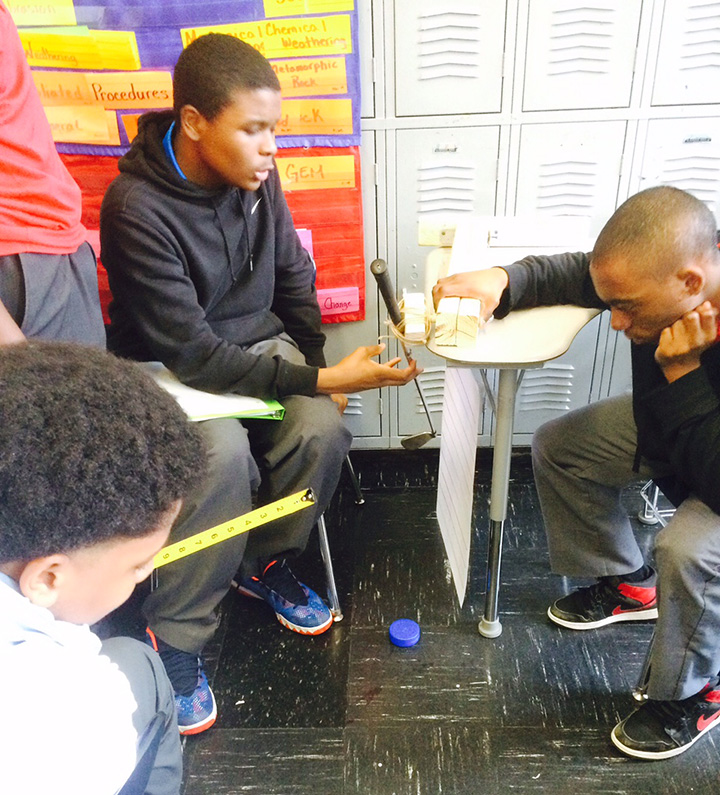 By Veeshan Narinesingh, STEM program leader
By Veeshan Narinesingh, STEM program leader
Every day our young men use mathematics to become better thinkers. In their STEM work at The Bridge Golf Foundation, our students often use concepts from algebra and statistics to solve problems and analyze their experimental data.
Last week, our young men went outside to nearby St. Nicholas Park for STEM in the sun. They had worksheets with a table that showed known values for static friction (between objects that are not moving) and kinetic friction (between objects that are in motion) for different objects and surfaces — wood on wood, granite on plastic, ice on ice, and so forth. They were then given a scenario in which an unknown object was pushed on an unknown surface with a known amount of force and resistance. In small teams, they solved for the coefficients of kinetic and static friction. When comparing their calculations to the table, they realized that the scenario described ice sliding on ice.
In one of last week’s indoor kinetic friction experiments, the students used their golf club pendulums to hit hockey pucks across the floor. They performed several trials, measuring the distance that each puck traveled, and created a data table using Excel. They averaged their data and then created an algorithm to solve for the kinetic friction coefficient after some algebraic manipulation of energy conservation.
Next up, the students will directly connect friction with golf as they move on to the final concept of this unit — rolling friction.